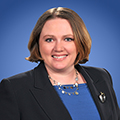State Board of Education Amends Special Education Regulations Effective July 1, 2014

August 2014
Number 54
On July 1, 2014, amendments to the state special education regulations went into effect, found in title 5, sections 300-3088 of the California Code of Regulations. Many of the regulations had not been updated since December 1987. Since then, other sources of special education law, including the California Education Code, the Individuals with Disabilities Education Act (IDEA) and the federal regulations to the IDEA, have been changed. The State Board of Education (SBE) amended the California regulations in an effort to better align them with statutes and regulations, remove redundant references contained elsewhere in the law, and to make the language more consistent.
For example, the SBE amended the regulations relevant to behavior interventions to account for the repeal of the Hughes Bill in 2013. The amended regulations remove the definitions of terms such as "behavioral emergency," "behavioral intervention case manager," "behavioral intervention plan" and "serious behavior problem." The regulations also add a new section, section 3051.23, to set forth the necessary qualifications of personnel who may design, plan or implement behavioral interventions.
The updated regulations also now use the term "related services," consistent with federal law, instead of "designated instruction and services," and have updated requirements for the qualifications of service providers. For example, the regulations now specifically state that language and speech development and remediation may be provided by a speech-language pathology assistant under direct supervision of a speech-language pathologist (SLP), if it is specified in the IEP and if the SLP does not supervise more than two assistants. Additionally, the use of assistants may not be used to increase the applicable SLP caseload limits. The regulations also now provide a specific definition for "music therapy" services.
The SBE also revised the regulations defining special education eligibility criteria to align with the federal standards. For example, the definition for Specific Learning Disability (SLD) provides that in determining whether a child has an SLD, the school district may consider whether there is a severe discrepancy between ability and achievement, or may also find SLD if a child does not achieve adequately under the "response to intervention" or "pattern of strengths and weaknesses" models. School districts are not prohibited from using a "severe discrepancy" model. Rather, the state regulations now track the federal IDEA regulations, which provide that a state may not mandate the use of a severe discrepancy model, but must allow for a "response to intervention" process, and may allow the use of other methods in determining the existence of a SLD.
These are some of the key changes to the regulations. The SBE's notice regarding the amended regulations, and more information about the changes to the regulations, are available here.
If you have any questions regarding this issue, please contact one of our eight offices located statewide. You can also visit our website, follow us on Facebook or Twitter, or download our Client News Brief App.
Other 2014 Back to School Client News Briefs
Reminder: The "Personal Belief" Exemption from Immunization Now Has New Requirements
Changes to the Laws Regarding Independent Study Go Into Effect Immediately
Annual Notice Requirements Modified for 2014-2015
Reminder: Minimum Wage in California Increased in 2014
Courts Intervene to Keep Charter Schools Operating Pending Appeals of Revocation Cases
Number 54
On July 1, 2014, amendments to the state special education regulations went into effect, found in title 5, sections 300-3088 of the California Code of Regulations. Many of the regulations had not been updated since December 1987. Since then, other sources of special education law, including the California Education Code, the Individuals with Disabilities Education Act (IDEA) and the federal regulations to the IDEA, have been changed. The State Board of Education (SBE) amended the California regulations in an effort to better align them with statutes and regulations, remove redundant references contained elsewhere in the law, and to make the language more consistent.
For example, the SBE amended the regulations relevant to behavior interventions to account for the repeal of the Hughes Bill in 2013. The amended regulations remove the definitions of terms such as "behavioral emergency," "behavioral intervention case manager," "behavioral intervention plan" and "serious behavior problem." The regulations also add a new section, section 3051.23, to set forth the necessary qualifications of personnel who may design, plan or implement behavioral interventions.
The updated regulations also now use the term "related services," consistent with federal law, instead of "designated instruction and services," and have updated requirements for the qualifications of service providers. For example, the regulations now specifically state that language and speech development and remediation may be provided by a speech-language pathology assistant under direct supervision of a speech-language pathologist (SLP), if it is specified in the IEP and if the SLP does not supervise more than two assistants. Additionally, the use of assistants may not be used to increase the applicable SLP caseload limits. The regulations also now provide a specific definition for "music therapy" services.
The SBE also revised the regulations defining special education eligibility criteria to align with the federal standards. For example, the definition for Specific Learning Disability (SLD) provides that in determining whether a child has an SLD, the school district may consider whether there is a severe discrepancy between ability and achievement, or may also find SLD if a child does not achieve adequately under the "response to intervention" or "pattern of strengths and weaknesses" models. School districts are not prohibited from using a "severe discrepancy" model. Rather, the state regulations now track the federal IDEA regulations, which provide that a state may not mandate the use of a severe discrepancy model, but must allow for a "response to intervention" process, and may allow the use of other methods in determining the existence of a SLD.
These are some of the key changes to the regulations. The SBE's notice regarding the amended regulations, and more information about the changes to the regulations, are available here.
If you have any questions regarding this issue, please contact one of our eight offices located statewide. You can also visit our website, follow us on Facebook or Twitter, or download our Client News Brief App.
Other 2014 Back to School Client News Briefs
Reminder: The "Personal Belief" Exemption from Immunization Now Has New Requirements
Changes to the Laws Regarding Independent Study Go Into Effect Immediately
Annual Notice Requirements Modified for 2014-2015
Reminder: Minimum Wage in California Increased in 2014
Courts Intervene to Keep Charter Schools Operating Pending Appeals of Revocation Cases
As the information contained herein is necessarily general, its application to a particular set of facts and circumstances may vary. For this reason, this News Brief does not constitute legal advice. We recommend that you consult with your counsel prior to acting on the information contained herein.





